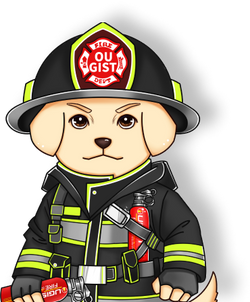Fires, while often preventable, continue to pose a significant threat to lives and property. Certain groups within society are at a higher risk of fire-related fatalities due to a combination of factors. Recognizing these vulnerabilities is crucial for improving fire safety and reducing the risk of tragic outcomes.

1. Children and Infants
Young children and infants are among the most vulnerable to fire-related fatalities for several reasons:
a. Limited Mobility: Babies and young children cannot escape independently from a burning structure, making them reliant on caregivers for rescue.
b. Inability to Recognize Danger: Young children may not understand the danger posed by fire and may be drawn to flames or heat sources.
c. Inadequate Fire Preparedness: Homes with young children may lack necessary fire safety measures or have safety hazards such as unsecured lighters or matches.
2. Seniors and the Elderly

Elderly individuals are also at a higher risk of fire-related fatalities:
a. Reduced Mobility: Seniors often have limited mobility, which can impede their ability to escape quickly from a burning building.
b. Health Conditions: Physical and cognitive impairments associated with aging can make it challenging to respond effectively during a fire emergency.
c. Medications: Some medications taken by seniors can cause drowsiness or impair cognitive function, affecting their ability to respond promptly.
3. Individuals with Disabilities
People with physical or cognitive disabilities face unique challenges in fire emergencies:
a. Accessibility Issues: Buildings may lack appropriate accommodations, such as ramps or accessible exits, making it difficult for individuals with disabilities to escape.
b. Communication Barriers: Hearing or speech impairments can hinder the ability to hear fire alarms or communicate distress.
c. Limited Mobility: Physical disabilities can make it challenging to evacuate quickly, especially in the absence of accessible exits or assistance.
4. Low-Income Communities
Low-income households often face elevated fire risks due to various factors:
a. Inadequate Housing: Substandard housing may lack proper fire safety measures, such as smoke detectors or fire-resistant materials.
b. Overcrowding: High-density housing can increase the risk of fire spread and hamper evacuation efforts.
c. Limited Access to Resources: Low-income individuals may have limited access to fire prevention education, emergency planning, or fire extinguishers.
5. Minorities and Non-English Speakers
Language and cultural barriers can impact fire safety awareness and response:
a. Language Barriers: Non-English speakers may have difficulty understanding fire safety instructions or communicating in emergency situations.
b. Cultural Practices: Cultural norms or practices can influence fire safety behaviors, which may differ from mainstream safety guidelines.
6. Rural and Remote Communities
Rural areas face distinct fire-related challenges:
a. Limited Emergency Services: Remote communities may have slower emergency response times due to their location.
b. Wildfires: Rural regions are more susceptible to wildfires, which can spread quickly and devastate entire communities.
Fire extinguisher can save lives and property by putting out a small fire—or suppressing it until the fire department arrives.


